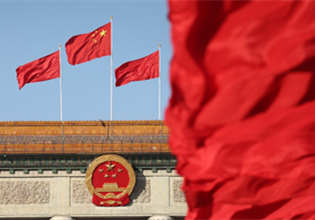Inner Mongolia expands opening-up via China-Europe trains
Inner Mongolia autonomous region is nowadays reportedly making every effort in order to build itself up as a preeminent hub for a China that continues to open up to the outside world.
Inner Mongolia spans the north, northeast and northwest of China, intersecting with eight provinces and autonomous regions internally, and externally it borders Russia and Mongolia.
It has 19 land ports and an 8,000-kilometer-long border. With its unique location, as well as cultural and resources advantages, the momentum for its opening up and commercial development is said to be becoming more rapid, driven in part by the dynamic port economy.
In the first 11 months of 2021, Ereenhot Port, the largest land port on the China-Mongolia border, handled 15.47 million metric tons of imported and exported goods, a year-on-year increase of 3.5 percent.
During the same period, the number of 2,416 inbound and outbound China-Europe trains passing through the land port reached 2,416 – a year-on-year increase of 12 percent and achieving contrarian growth that countered the general negative influence of the novel coronavirus epidemic.
Manzhouli, as China's largest land port, handled 4,235 China-Europe trains entering and leaving the country in 2021, an increase of 650 trains or 18 percent on 2020.
At present, the China-Europe trains entering and leaving the country through Manzhouli port can reach 13 countries and 28 cities in Europe.
The exports include daily necessities, household appliances, industrial machinery, metals, as well as agricultural and sideline products. Imported goods, meanwhile, include auto parts, plates and food.
During the 13th Five-Year Plan period (2016-20), the total import and export volume of Inner Mongolia increased by 8.5 percent annually, while the China-Europe freight trains served by Inner Mongolia's ports accounted for nearly 50 percent of those entering or exiting the country.
To top it off, Inner Mongolia has consolidated and compressed overall customs clearance times – with the clearance times for imports and exports at its ports reduced last year by 50 percent compared with that in 2017.



 Print
Print Mail
Mail





